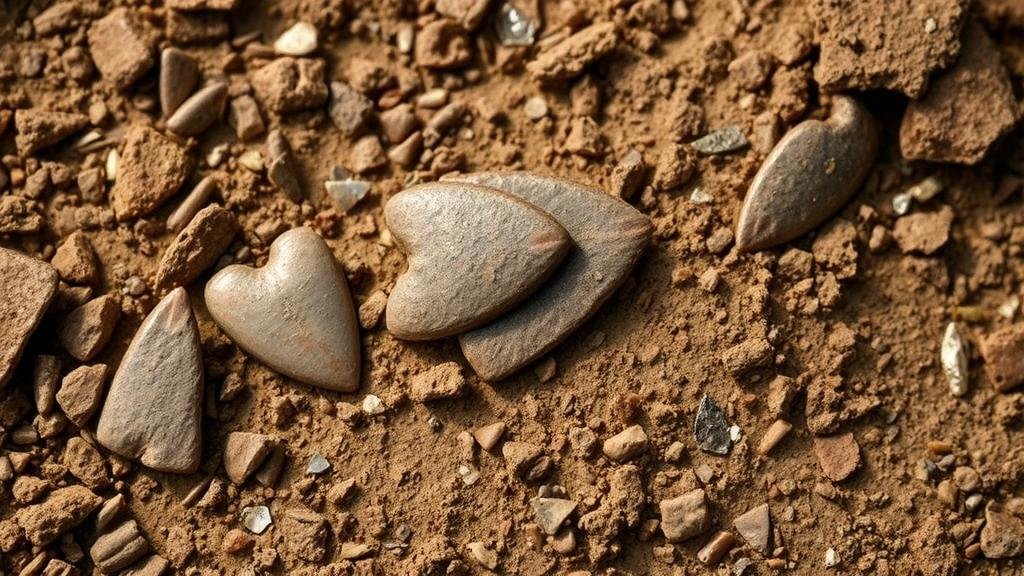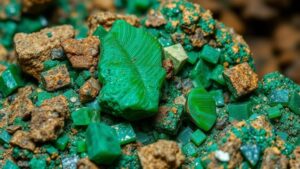Finding ancient arrowheads crafted from flint along riverbanks in the Great Plains.
Finding Ancient Arrowheads Crafted from Flint Along Riverbanks in the Great Plains
The Great Plains, a vast expanse of flatlands stretching across the interior of North America, is not only a biome of unique ecosystems but also a treasure trove for rockhounds and mineral collectors. Among its many hidden artifacts, ancient arrowheads crafted from flint serve as poignant reminders of prehistoric Native American cultures. In this article, we will explore the significance of these artifacts, the best practices for finding them, and the geological context that makes this region especially fruitful for collectors.
The Cultural Significance of Flint Arrowheads
Flint arrowheads hold immense value historically and culturally. Dating back thousands of years, they were essential tools for hunting and protection. Native American tribes, including the Sioux and Cheyenne, utilized these stone tools to enhance their survival in the harsh Plains environment.
According to the National Park Service, the innovations in tool-making saw flint knapping techniques evolve over generations, leading to beautifully crafted arrowheads that reflect not only functionality but also artistry. For example, the Clovis point, one of the oldest known types, dates back to around 13,000 years ago and exhibits a distinctive fluted design.
Why Riverbanks?
Riverbanks are particularly favorable locations for finding flint arrowheads. natural erosion processes of rivers tend to expose ancient materials that had been buried for millennia. Rainfall and river currents wear away at soil and sediment, bringing artifacts to the surface.
- Erosion: Continuous water flow causes soil erosion, revealing hidden treasures.
- Recent Flooding: Post-flood conditions can uncover numerous artifacts.
- Accessibility: Rivers provide easy access to often remote areas where ancient human activity occurred.
Types of Flint Used and Identification
Flint is a fine-grained sedimentary rock that originates through a process of silica-rich deposits. The Great Plains primarily showcases two types of flint:
- Chert: A type of flint that comes in various colors, ranging from gray to red. It is often used in crafting a variety of stone tools.
- Heat-treated Flint: This type has undergone a heat treatment process, enhancing its workability for knapping.
When identifying arrowheads, collectors should pay attention to key characteristics such as:
- Shape: Various styles (e.g., triangular, lanceolate)
- Color: Color can range dramatically depending on the type of flint
- Flaking Patterns: Look for distinctive pressure flaking indicative of skilled craftsmanship
Practical Tips for Collecting Arrowheads
For rockhounds eager to add flint arrowheads to their collection, a methodical approach will enhance the picking experience:
- Research Locations: Familiarize yourself with local regulations concerning artifact hunting. Some areas may prohibit collection in state parks or protected lands.
- Visit After Rain: The best times to search for arrowheads are after heavy rains or flooding events, which may reveal previously concealed items.
- Use a Sieve Tool: Consider using a sieve or trowel to help sift through sediments along riverbanks effectively.
- Document Find Locations: Keep a record of where arrowheads were found, which can be valuable for historical research.
Ethical Collecting Practices
As important as finding arrowheads is understanding the ethics behind collecting them. Respect for the archaeological and cultural significance of these artifacts is paramount. Here are key considerations:
- Always obtain permission if you are on private land.
- Understand and comply with local laws and regulations regarding excavation and collection.
- Consider reporting significant findings to local archaeological societies or authorities.
Conclusion
Finding ancient arrowheads crafted from flint along the riverbanks of the Great Plains is a rewarding pursuit for both enthusiasts and serious collectors. It offers a unique opportunity to connect with the regions prehistoric past while honing skills in geology and archaeology. By applying the tips mentioned, practicing responsible collection, and appreciating the historical significance of these artifacts, rockhounds can contribute to the preservation of cultural heritage while embarking on a fascinating hobby.
As you plan your next expedition, remember that every arrowhead tells a story, connecting you with the lives of those who once roamed these vast plains.



